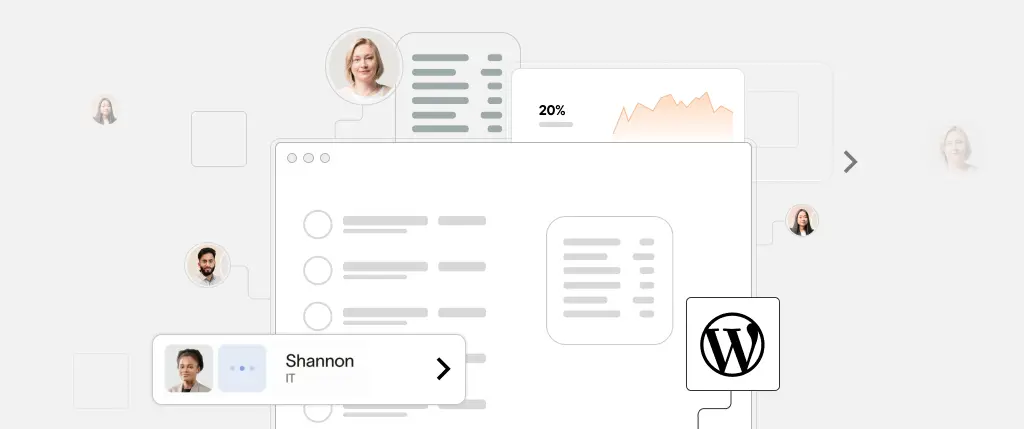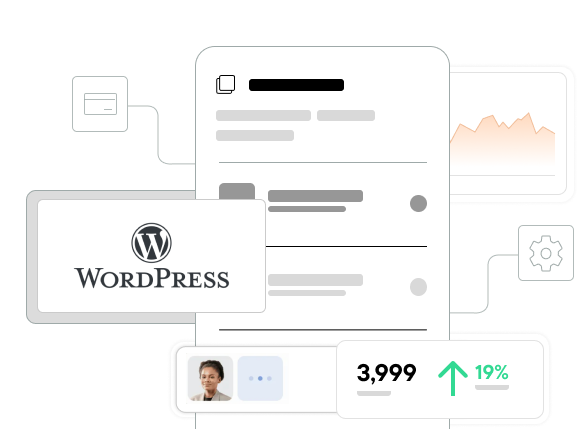If you’re building a high-traffic application or exposing a public REST API, WordPress API rate limiting becomes essential. Without it, abusive clients or automated scripts can flood your site with requests, degrading performance or even taking it offline.
Unlike some frameworks, WordPress doesn’t offer built-in rate limiting. That means developers must implement custom throttling strategies – especially for apps serving mobile clients, third-party integrations, or headless frontends.
In this guide, we’ll walk through how to add WordPress API rate limiting, look at practical code examples, and explore how Sitebox helps manage this at scale across multiple WordPress installations.
What Is WordPress API Rate Limiting?
API rate limiting is a strategy that restricts how many requests a client can make within a defined period. In the context of WordPress, it ensures your server handles traffic fairly and remains stable even under heavy load.
Why Use It?
- 🚫 Prevent brute-force attacks or bot abuse
- 🔒 Protect backend resources
- ⚖️ Enforce fair usage across users
- 📉 Avoid performance degradation
Throttling vs. Blocking in WordPress APIs
- Throttling: Temporarily delays or denies excessive requests (e.g., via a 429 status).
- Blocking: Blacklists the client permanently or until manually unblocked.
Because WordPress doesn’t include native throttling, you need to implement logic inside your theme, plugin, or via a centralized solution like Sitebox.
How to Implement WordPress API Rate Limiting
Step 1: Identify the Client
Choose a method to track requests:
- IP address (
$_SERVER['REMOTE_ADDR']) – easy but unreliable behind proxies - User ID – best for authenticated endpoints
- API token – ideal for custom authentication
Step 2: Choose a Storage Mechanism
You’ll need to track request counts. Common methods include:
- Transients – great for short-term limits
- Object caching – ideal with Redis/Memcached for high performance
- Custom database tables – for persistent or historical tracking
Step 3: Apply Logic Using rest_pre_dispatch
Here’s a basic IP-based rate limiter using WordPress transients:
add_filter('rest_pre_dispatch', 'custom_api_rate_limiter', 10, 3);
function custom_api_rate_limiter($response, $server, $request) {
$ip = $_SERVER['REMOTE_ADDR'];
$limit = 100; // max requests
$window = 300; // time window in seconds (5 minutes)
$key = 'api_limit_' . md5($ip);
$count = get_transient($key);
if ($count === false) {
set_transient($key, 1, $window);
} elseif ($count >= $limit) {
return new WP_REST_Response([
'error' => 'Rate limit exceeded',
'limit' => $limit,
'retry_after' => $window
], 429);
} else {
set_transient($key, $count + 1, $window);
}
return null; // allow request to proceed
}Best Practices for WordPress API Rate Limiting
✅ Use the Correct Status Code
Return HTTP 429 (Too Many Requests) when a limit is exceeded:
return new WP_REST_Response('Too Many Requests', 429);✅ Send Informative Rate Limit Headers
Provide clients with useful feedback:
header('X-RateLimit-Limit: 100');
header('X-RateLimit-Remaining: 42');
header('Retry-After: 300');✅ Limit High-Risk Endpoints
Apply stricter limits to routes like:
/wp-json/wp/v2/comments- Custom APIs that accept user-generated content or external queries
✅ Avoid Excessive Logging
Don’t log every hit to the database or options table. Use transients or object cache to prevent bloat.
✅ Monitor & Adjust in Real Time
Track usage patterns to detect spikes, bots, or high-frequency users. Adjust thresholds dynamically or use IP bans as needed.
How Sitebox Simplifies API Throttling Across WordPress Sites
Managing WordPress API rate limiting for one site is manageable. But what if you’re responsible for 50, 100, or more WordPress installations? That’s where Sitebox makes a big difference.
Features That Help:
- 📊 Global Usage Monitoring
View real-time API usage per endpoint, per client, across all your sites. - 🔁 Blueprint-Based Rate Limiting
Set once, apply rules across environments using Sitebox Blueprints. - ⚙️ Pluggable Logic
Hook into Sitebox’s centralized dispatcher to implement advanced logic. - 🌐 Edge-Caching & Pre-Throttling
Block traffic before it hits PHP by integrating with CDN and edge layers. - 🚫 IP Throttling & Blocking
Instantly block abusive clients or geographies at the infrastructure level.
With Sitebox, you don’t have to reinvent the wheel or maintain dozens of rate-limiting snippets. It handles version control, central management, and automated protection – purpose-built for WordPress at scale.
Conclusion
WordPress API rate limiting is no longer optional for high-volume apps, mobile backends, or public endpoints. Without it, your API is vulnerable to abuse, performance drops, and outages.
Start by implementing basic logic using transients and filters like rest_pre_dispatch. Then monitor usage, fine-tune limits, and consider scaling with Sitebox for centralized control and better security.
🚀 Whether you’re building SaaS on WordPress or serving millions of requests—rate limiting should be a foundational part of your API strategy.



